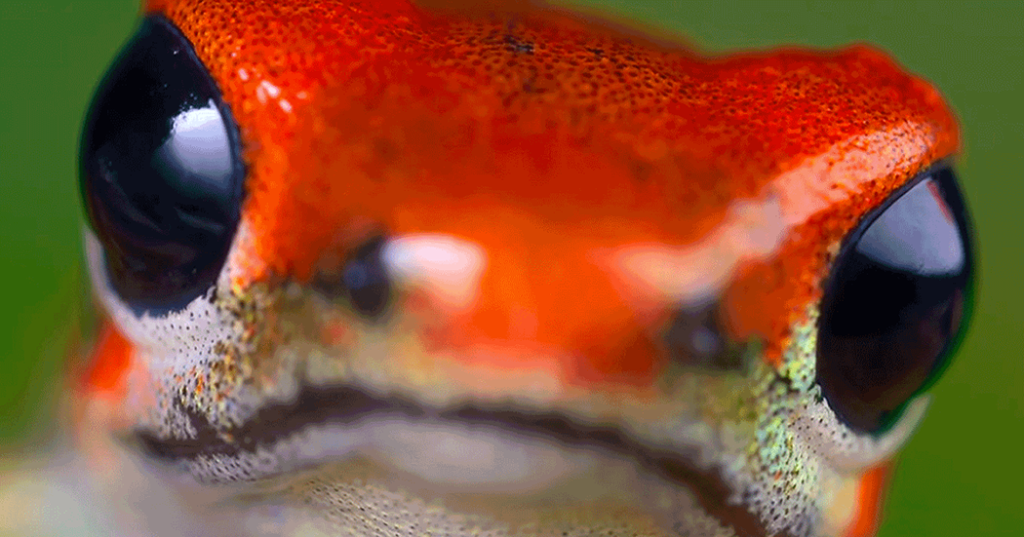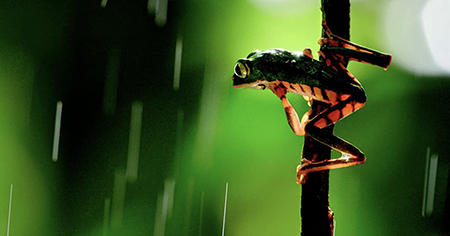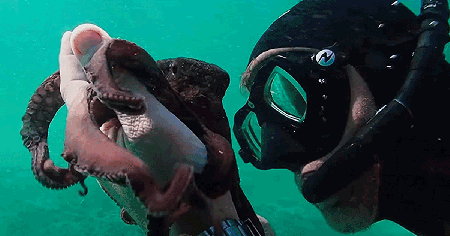
review | Life in Color
Netflix makes major strides toward picture-perfect reproduction with this David Attenborough nature series
by Dennis Burger
June 24, 2021
If you have someone in your life who insists that streaming simply isn’t capable of delivering an AV experience worthy of a true home cinema, here’s a fun little experiment you can perform, assuming you’re willing to spend a few bucks. If you don’t have one already, go out and buy a Roku Ultra for $75 or whatever they’re selling for at the moment. Hook it up to the biggest and best display in your home. Fire up either of the first two episodes of the new Netflix/BBC co-production Life in Color and skip past the opening credits. Then invite the bitrate dogmatist in your life to sit and watch a few minutes of the series. If they’re anything like most videophiles, they’ll soon be begging to borrow the disc or at least know what it’s called so they can order their own copy.
And that’s when you spring the trap. Hit the back button on your remote and return to the Netflix homepage. If your guest balks, hit Play again and implore them to point out any flaws in the imagery. Challenge them to show you any noteworthy compression artifacts. Ask them to point out any instances of less-than-razor-sharp detail, any loss of color purity. Or, you know, maybe take a kinder and gentler approach. It occurs to me as I’m writing this that perhaps there’s a good reason I don’t have more friends.
This series, played via good streaming hardware, needs to be put in front of the eyeballs of more home cinema enthusiasts, if only as a prime example of just how much streaming has improved in just the past few years. But even if you’re not here to inspect the imagery with a magnifying glass and marvel at the masterful application of high-efficiency compression, there’s a lot to love about Life in Color. The series is, in many ways, a bit of a throwback for host David Attenborough, a return to a time when he wasn’t merely narrating documentary footage but actively participating in the filming. I thought we’d seen the end of that era, given Attenborough’s age (95, for those keeping count). And this may be the last time we see him traipsing through the jungle to point out something cool and eye-catching.
It’s also something of a return to the more specialized sort of documentaries he more commonly made in the ’80s and ’90s. For the past few years, Attenborough has been focused on making grand statements, as if every new documentary released under his name was made as if it would be his last. But, as its name in implies, Life in Color is content to go deep rather than wide, focusing on one topic with laser precision: The variety of colors in nature.
The first episode, “Seeing in Color,” focuses on all the ways life uses chromaticity to attract mates, signal friends, and repel foes, as well as the different ways animals see in color, both within and outside of the spectrum visible to humans. The second episode, “Hiding in Color,” focuses mostly on camouflage.
The third episode, “Chasing Color,” is a weird one, and I mean that in the best possible way. It sets itself up as a sort of making-of for the first two episodes, exploring the new camera and lens technology developed specifically for this series. But then it veers off to answer to the question: “How do you know that?” In other words, it’s a pretty satisfying explanation of the science behind the surprising little bits of trivia dropped by Attenborough throughout the earlier episodes.
As much as I loved the series—although, truth be told, I would happily consume nine hours of Attenborough narrating golf, or paint drying, or my last colonoscopy, so maybe I’m not the best judge of its quality—I almost found myself distracted by how impossibly perfect it all looks. Just over two years ago, I absolutely raved about the gorgeousness of Our Planet. But Life in Color looks even better, mostly because the few remaining encoding flaws that made brief onscreen appearances in the older series are nowhere to be seen here.
There are underwater shots reminiscent of those in Our Planet, and yet none of the minor color banding that briefly reared its head there. There are scenes here that push the bounds of image complexity in ways Our Planet never did, and yet they appear without blemish. (There’s one shot, in which a peacock bristles its plume in slow motion, that’s such a kaleidoscope of fine detail that I would expect it to be riddled with some digital ookiness even at 100 mbps. And yet, with my nose on my screen, I couldn’t see any of the telltale signs of HEVC reaching its breaking point. I can only assume Netflix recently adopted a new encoder, because otherwise I just cannot make sense of why this imagery looks this pristine.)
Dolby Vision is also employed to stunning effect. There are colors on the screen that older home video technology simply wasn’t capable of reproducing—vibrant reds and yellows and greens that fall outside the boundaries of the color space used in the HD era.
I guess if you want to pick nits about the presentation, you could take issue with the fact that the audio is merely 5.1, not Dolby Atmos. But it’s still a lovely mix. And it up-mixes into Atmos beautifully, especially in the scenes set within jungles or forests.
So, yeah, maybe don’t take my advice when it comes to confronting your streaming-skeptical friends. Perhaps take a nicer approach. But make them sit down and watch Life in Color anyway. It’s honestly some of the most compelling home cinema demo material I’ve seen in years.
Dennis Burger is an avid Star Wars scholar, Tolkien fanatic, and Corvette enthusiast who somehow also manages to find time for technological passions including high-end audio, home automation, and video gaming. He lives in the armpit of Alabama with his wife Bethany and their four-legged child Bruno, a 75-pound American Staffordshire Terrier who thinks he’s a Pomeranian.
PICTURE | Dolby Vision is also employed to stunning effect, producing vibrant reds and yellows and greens that fall outside the boundaries of the color space used in the HD era
SOUND | The 5.1 soundtrack is lovely, and up-mixes into Atmos beautifully, especially in the scenes set within jungles or forests
© 2025 Cineluxe LLC





